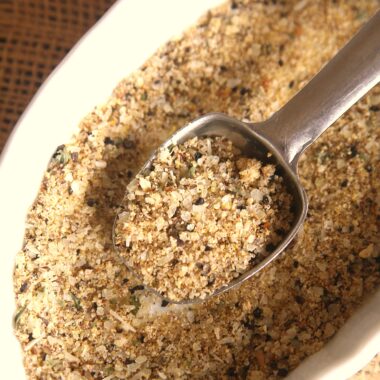Last Updated on March 27, 2025 by Karen
Learn how to avoid dry brisket with our step-by-step guide. Discover the best cooking temperatures, tips for using a meat thermometer, and why slow and low is the key to perfect Texas-style brisket. Avoid common mistakes and cook the perfect brisket every time.
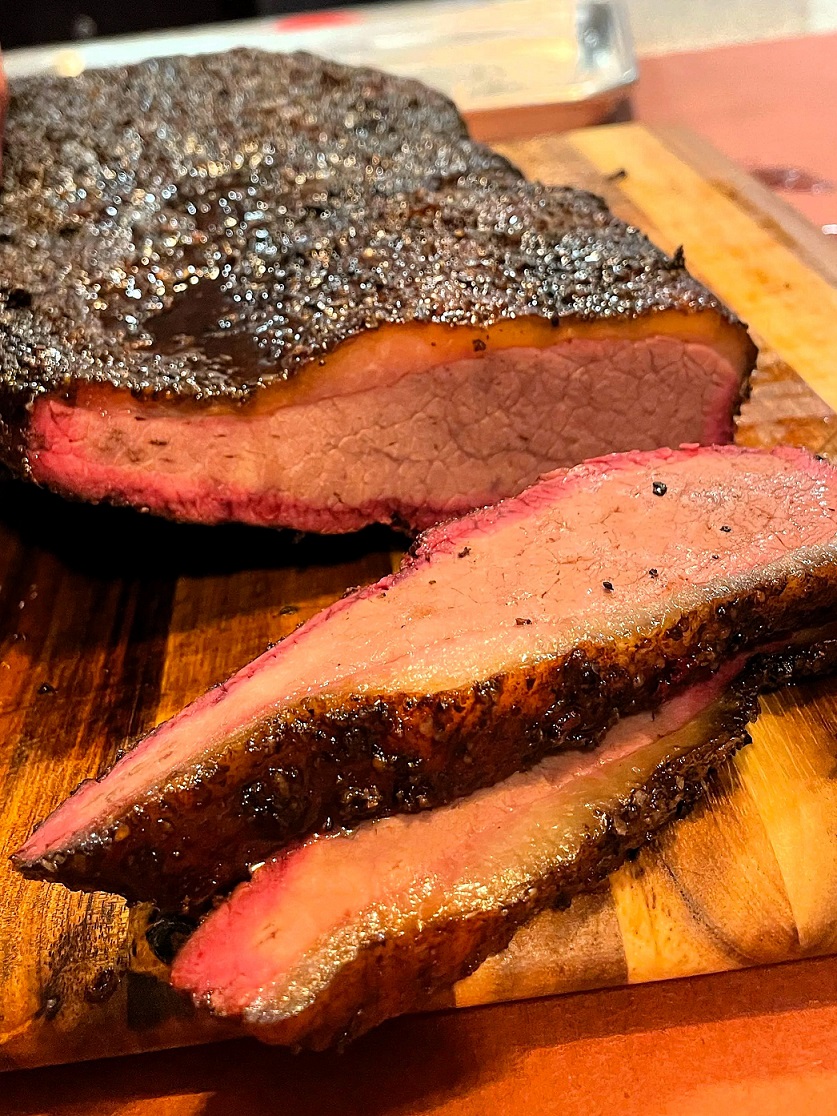
Brisket is one of those cuts of meat that gets a lot of attention. It’s rich in flavor and has the potential to be absolutely amazing if cooked right. However, getting brisket just right can be tricky, especially for beginners. Whether you’re using a smoker, slow cooker, or oven, it can be hard to tell when it’s cooked perfectly. You want it to be juicy and tender, but sometimes, it turns out dry, tough, or even undercooked.
I remember the first time I tried cooking beef brisket. I had seen plenty of people on TikTok and YouTube showing off their perfectly smoked briskets, and I thought, “How hard can it be?” I followed a recipe for a Texas-style brisket, got my smoker ready, and seasoned the meat with black pepper and salt. Hours later, I cut into the brisket, and what I found wasn’t what I was hoping for. It was dry. I thought I followed the cooking process correctly, but it didn’t turn out as juicy and tender as I expected.
I wasn’t sure if it was undercooked or overcooked. Maybe I didn’t cook it long enough, or perhaps I had cooked it for too long. This is a problem a lot of people face when cooking brisket for the first time. But don’t worry—I’ve learned from that experience and have figured out how to avoid dry brisket in the future. The good news is, you can easily tell if your brisket is undercooked or overcooked, and I’m here to help you figure out exactly how to get it just right.
In this post, I’ll guide you step by step through the process of cooking a perfect brisket. From understanding the internal temperature and knowing how to check it with a meat thermometer, to figuring out if your brisket needs more time or is ready to be sliced, I’ll give you all the tips you need to make the best brisket. You’ll learn about the importance of connective tissue, how to handle the fat side correctly, and why cooking at low temperatures helps break down muscle fibers to make your brisket juicy.
If you’ve ever wondered why your last brisket came out dry or why it didn’t have that perfect texture, this guide is for you. Whether it’s your first brisket or your next brisket, I’ll show you the best way to cook it. Ready to make a delicious brisket? Let’s dive in!
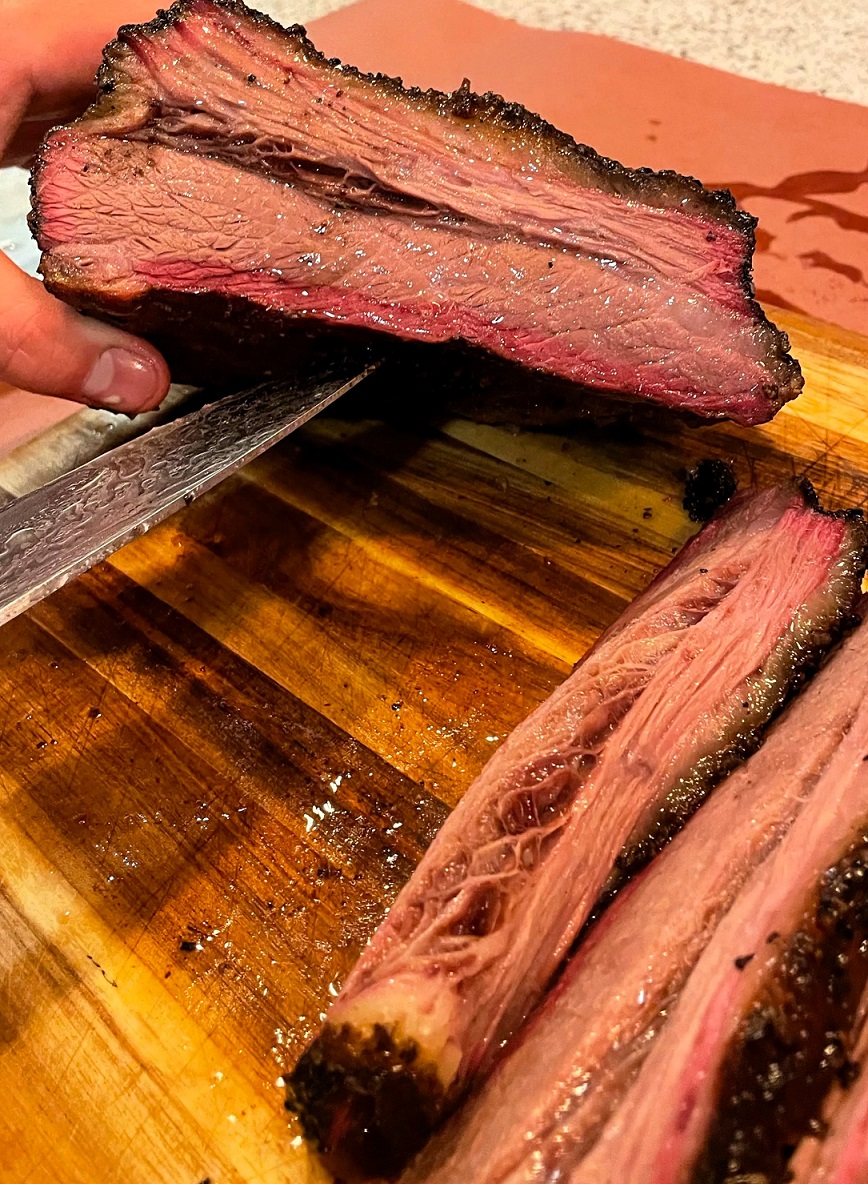
What Happens When Brisket is Dry?
Brisket is a delicious and popular cut of beef, known for its rich flavor and tender texture. However, cooking brisket can be tricky, especially for beginners. Whether you’re using a smoker, slow cooker, or oven, the goal is to achieve that perfect balance between juicy brisket and dry, tough meat.
Brisket is a fairly lean cut of beef that has a lot of connective tissue, which includes collagen. This collagen needs to break down to turn the brisket into a tender, juicy cut. But when cooked improperly, brisket can become dry and tough, which can be frustrating after hours of preparation. So what’s happening when brisket turns out dry, and how can you avoid this outcome? Let’s break it down!
Brisket is one of those cuts of meat that requires the right technique to cook it just right. If you’re using a meat thermometer, the key is to make sure you’re not overcooking or undercooking the brisket. Both of these mistakes are common reasons why brisket can dry out.
Don’t worry, though! With the best method, some patience, and the right tips, anyone can make a great brisket. So let’s dive into why brisket turns out dry, and how to fix it!
Overcooking vs. Undercooking: What Goes Wrong?
When brisket is cooked improperly, there are two main causes of dryness: overcooking or undercooking.
Overcooked Brisket
When you cook brisket at higher temperatures or for too long, the moisture from the meat begins to evaporate. Brisket has a large fat cap that helps keep it juicy, but too much exposure to heat will melt this fat too quickly, causing the connective tissue to break down improperly. When this happens, the brisket turns dry and stringy.
If you cook the brisket at too high a temperature, the muscle fibers contract and squeeze out moisture. This leads to a dry brisket that’s tough and chewy, making it hard to enjoy.
Symptoms of Overcooked Brisket:
Dry, stringy texture.
Tough and hard to chew.
Dark, crispy outer layer that may resemble burnt ends.
Undercooked Brisket
On the flip side, undercooking brisket is just as problematic. If you don’t cook brisket for enough time or at low temperatures, the connective tissue won’t break down, and the brisket will remain tough.
A whole brisket or full packer brisket needs plenty of time to cook. Undercooking results in meat that’s difficult to slice and can be chewy, even though the outside may seem fine.
Symptoms of Undercooked Brisket:
Tough and chewy texture.
Meat that’s difficult to slice.
A firm center that still feels raw or underdone.
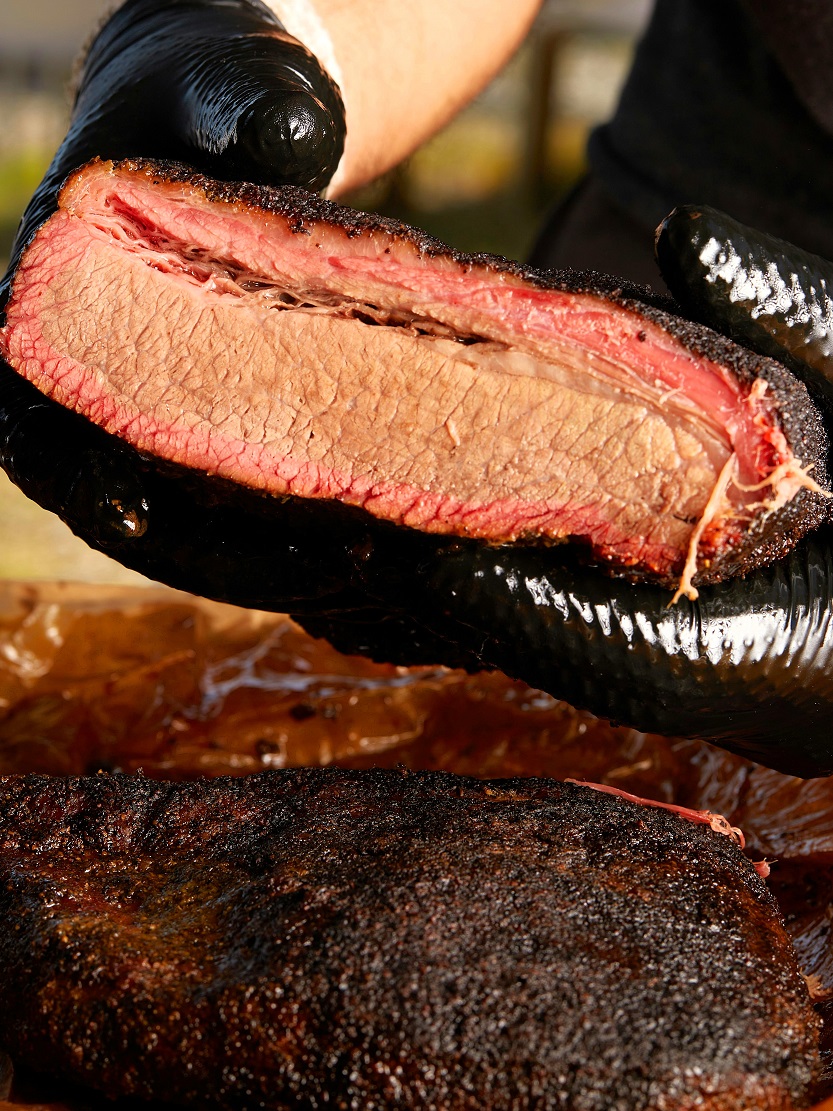
The Importance of Temperature: Getting It Just Right
When it comes to cooking brisket, the temperature is the most critical factor in ensuring you achieve a perfect brisket. Whether you’re using a smoker, slow cooker, or oven, knowing the right internal temperature and cooking temperature is essential to avoid dry or undercooked meat. Understanding the relationship between the temperature of the brisket and the breakdown of the tough muscle fibers and connective tissue is key to producing a juicy brisket.
The Key to Tenderness: Collagen Breakdown
Brisket is known for being a tough cut of beef, primarily due to the high amount of connective tissue it contains. This tissue, mainly collagen, needs to be broken down through low and slow cooking to turn into gelatin, which gives the meat its tender texture. Internal temperature is vital in this process; if the brisket is cooked at a temperature that’s too low, the collagen won’t break down effectively, leaving you with a tough and chewy piece of meat. However, if it’s cooked at too high a temperature, the muscle fibers will seize up and the meat will dry out.
The Ideal Internal Temperature at 195-205°F
The magic number for brisket is an internal temperature between 195°F and 205°F. Within this range, the collagen has broken down enough for the brisket to become tender and juicy. Once you reach this temperature, the meat fibers will relax, allowing the brisket to pull apart easily with a fork. It’s important to remember that brisket continues to cook slightly even after being removed from the heat, so it’s best to pull it from the heat source when it reaches 195°F and let it rest. This will allow the juices to redistribute throughout the meat, ensuring that your brisket is moist and flavorful.
Low and Slow Cooking for Best Results
The key to cooking brisket is low and slow cooking. This involves cooking the brisket at a lower temperature for a long period of time—usually between 225°F and 250°F. At these temperatures, the collagen has the time to break down properly, while the fat cap renders slowly, keeping the meat juicy. Slow cooking also allows for the smoke flavor to penetrate the meat, creating the perfect smoke ring and bark. This process can take anywhere from 6 to 12 hours, depending on the size of the brisket and your cooking method.
The Reverse Sear Method: A Different Approach
Some people prefer the reverse sear method to get the best of both worlds—a tender brisket with a crispy, flavorful bark. With this method, you start by cooking the brisket at a low temperature (around 225°F), allowing it to slowly cook and break down the collagen. Then, near the end of the cooking process, you finish the brisket at a higher temperature (around 400°F) to develop a perfect crust. This high-heat sear adds a delicious, crisp exterior without sacrificing the tenderness inside.
Using a Meat Thermometer for Precision
To ensure you’re cooking your brisket to the correct internal temperature, using a meat thermometer is essential. A temperature probe allows you to accurately monitor the temperature without opening the smoker or oven door, which can cause heat loss and affect the cooking time. For the most precise readings, insert the thermometer into the thickest part of the flat (the leaner side of the brisket), avoiding the fat cap and brisket point.
Having a meat thermometer with an instant-read function is one of the best tools for ensuring your brisket cooks to the ideal internal temperature. It eliminates guesswork and helps prevent overcooking or undercooking. A digital thermometer is also highly recommended as it gives you a quick and accurate reading.
The Importance of Resting: Don’t Skip This Step!
Once your brisket reaches the magic temperature range of 195°F-205°F, it’s important to remove it from the heat and allow it to rest. The resting time is when the brisket continues to cook slightly, while the juices inside redistribute throughout the meat. Skipping this step can result in a dry brisket, as the juices will run out when you slice it. Rest your brisket for 20-30 minutes covered in aluminum foil or pink butcher paper to keep the heat in. After resting, your brisket will be ready to slice and enjoy.
The Dangers of Overcooking
While you may be tempted to keep cooking your brisket longer in an attempt to get it to that perfect tenderness, overcooking can be a real risk. Brisket cooked past 205°F can become dry and tough, as the muscle fibers will begin to contract too much and expel moisture. Therefore, it’s crucial to keep an eye on the temperature and avoid going too far past the recommended range.
The Final Check: The Pull Test
In addition to checking the internal temperature, you can also use the pull test to check if your brisket is done. To do this, take a fork and gently pull on the brisket. If it easily pulls apart with little resistance, you know it’s done. This test is a great way to confirm that your brisket is tender and ready for slicing.
Temperature Is the Key to Success
The internal temperature of your brisket plays a pivotal role in how the meat turns out. By carefully monitoring the internal temperature with a meat thermometer and ensuring it stays within the optimal range of 195°F to 205°F, you’ll achieve that perfect balance of tender, juicy brisket with the ideal bark. Remember, low and slow is the best method for cooking, and don’t skip the resting time to allow the brisket to reabsorb its juices. Whether you’re a beginner or a seasoned pro, getting the temperature right will help you make the best brisket every time!
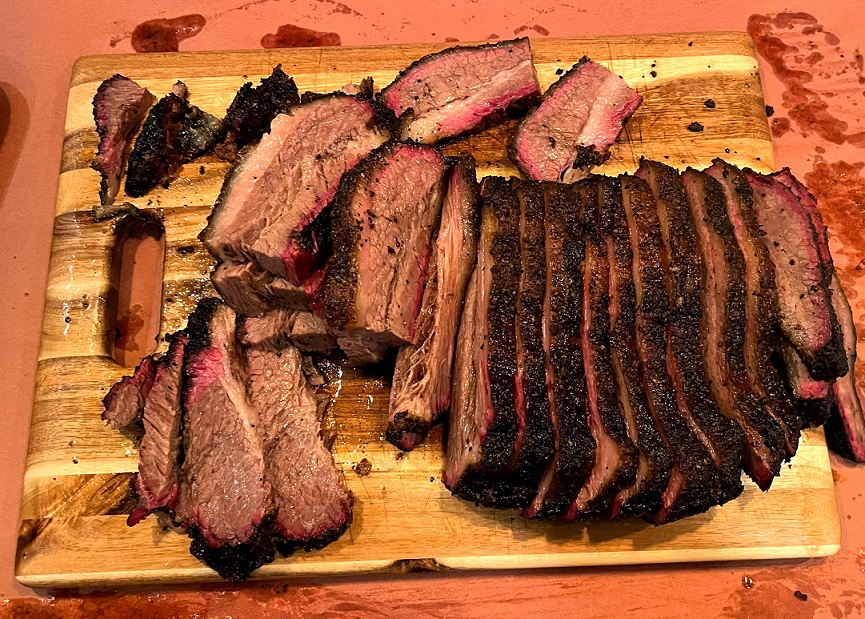
How to Keep Brisket Moist: Tips for Success
Here are some essential tips to help you avoid dry brisket and make sure you get it just right.
1. Use a Meat Thermometer
A digital thermometer or temperature probe is your best friend when cooking brisket. Insert it into the thickest part of the flat or point end of the brisket. This way, you can monitor the internal temperature and avoid overcooking or undercooking.
2. Cook at Low Temperatures
The best way to cook brisket is slowly at low temperatures. This allows the fat cap to melt properly and gives the connective tissue enough time to break down. It’s all about patience and giving the brisket enough time to reach the perfect internal temperature.
3. Wrap the Brisket in Aluminum Foil or Pink Butcher Paper
Wrapping the brisket helps it retain moisture during the cooking process. After the brisket has smoked for a few hours, wrapping it in pink butcher paper or aluminum foil can lock in the juices and prevent the meat from drying out.
4. Rest the Brisket
Once your brisket has finished cooking, don’t cut into it right away. Let it rest for at least 30 minutes. This gives the meat a chance to reabsorb its juices, which is essential for keeping it moist and tender.
5. Use a Good Brisket Cut
A whole brisket (or whole packer brisket) is usually the best option. It contains both the flat end and point end, offering a mix of textures. Look for briskets with a good fat cap—this will help the meat stay moist during the long cooking process. Smaller briskets may cook faster but don’t have the same tenderness as a full brisket.
6. Cook for Enough Time
Don’t rush the process! The cook time for a brisket depends on its size, but most briskets take 6 hours to 12 hours to cook at the right temperature. A slow cooker or smoker is ideal, as it allows the brisket to cook low and slow for the best result.

What is the best way to slice the brisket?
1. Let the Brisket Rest
After cooking, allow your brisket to rest for at least 30 minutes. This step is important because it gives the meat time to reabsorb the juices, making it more moist and tender. If you slice it too soon, you might lose some of those juices, and the meat could be dry.
2. Identify the Grain
Brisket has two distinct muscles: the flat and the point. Each muscle has a different grain direction. The grain refers to the orientation of the muscle fibers, and slicing against the grain is the key to achieving tender slices.
Flat: The grain of the flat is typically uniform and runs in one direction.
Point: The point end has a more irregular grain that can run in multiple directions.
3. Cut Against the Grain
The best way to slice brisket is to cut against the grain of the meat. This means you want to cut across the long muscle fibers rather than with them. Slicing against the grain helps break down the fibers and makes each slice more tender and easier to chew.
For the flat section, cut thin slices perpendicular to the grain.
For the point section, you may need to rotate the brisket and cut at a different angle if the grain changes direction. It’s important to be flexible and adjust your slicing based on the grain.
4. Use a Sharp Knife
Make sure to use a sharp knife for slicing the brisket. A sharp knife ensures clean cuts without tearing the meat. It also allows you to slice the meat thinly, which will give you the best texture.
5. Slice Thin for Tenderness
Aim for thin slices—around 1/4-inch thick. Thinner slices tend to be more tender and are better at holding the moisture and smoke flavor. However, if you prefer thicker slices, that’s fine too, but they might not be as tender.
6. Consider the Point and Flat Separately
If you’re working with a whole packer brisket (which includes both the flat and point), it’s a good idea to separate them before slicing. The point end is usually a bit more fatty and tender, while the flat is leaner and firmer.
Once separated, you can slice each muscle according to its grain for optimal tenderness.
What to do with the Burnt Ends?
When slicing the point end of the brisket, don’t forget that burnt ends are a delicious treat! After slicing the point, if you have some thicker chunks, you can cube them and reheat them in a smoker or oven for a few more hours to make burnt ends.
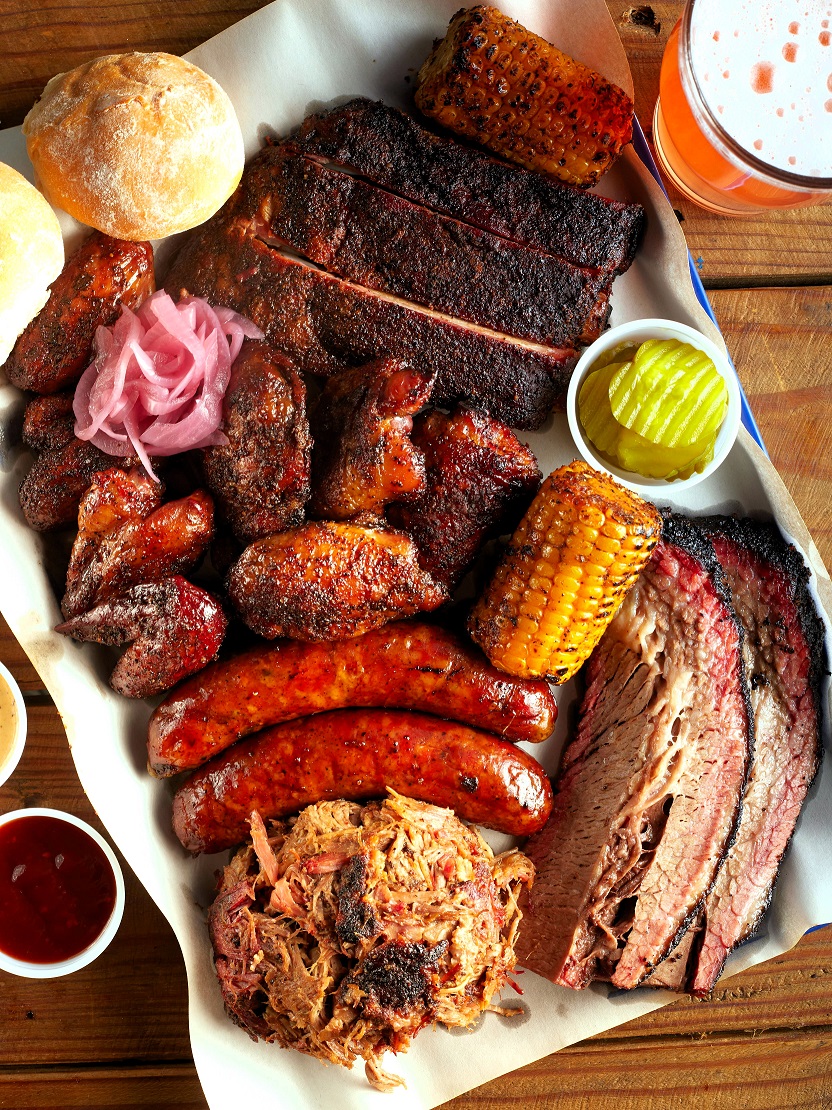
What are some ways to serve brisket?
1. Classic Brisket Sandwich
A brisket sandwich is one of the most popular ways to serve this flavorful cut of beef. Simply take thin slices of smoked brisket and serve them on a soft bun or a crusty roll. Add your favorite barbecue sauce, pickles, coleslaw, or onions for some extra flavor and crunch. This is perfect for a casual meal or a backyard BBQ.
2. Brisket Tacos
For a fun twist, try brisket tacos. Shred the smoked brisket and place it inside soft corn or flour tortillas. You can top it with salsa, guacamole, cilantro, onions, or a squeeze of lime for a flavorful, savory bite. These make a great appetizer or main course.
3. Brisket on a Salad
If you’re looking for a lighter option, brisket on a salad is a great way to enjoy the beef without feeling too heavy. Use mixed greens as your base, then top it with sliced brisket, cherry tomatoes, red onions, and avocado. You can add a tangy dressing, such as a balsamic vinaigrette or ranch, to complement the meat.
4. Brisket Chili
If you have leftover brisket, turn it into a delicious bowl of brisket chili! Shred the brisket and mix it with beans, tomatoes, onions, garlic, chili powder, and your favorite seasonings. Let it simmer for a few hours to let all the flavors meld together. Serve it with cornbread or a dollop of sour cream.
5. Brisket and Eggs
For breakfast or brunch, serve brisket with eggs. Sauté the sliced brisket in a pan and add scrambled or fried eggs. This savory combo makes for a hearty meal to start the day. Add some hash browns or toast on the side for extra satisfaction.
6. Brisket with Mashed Potatoes
Brisket pairs wonderfully with mashed potatoes. The rich, tender meat complements the creamy texture of mashed potatoes perfectly. Top the brisket with some of its own juices or a beef gravy for an indulgent, comforting meal.
7. Brisket Nachos
Brisket nachos are a crowd-pleasing appetizer or snack. Spread tortilla chips on a baking sheet, layer with shredded brisket, cheese, jalapenos, and your favorite nacho toppings like sour cream, guacamole, and salsa. Bake until the cheese is melted, then serve with a side of extra toppings.
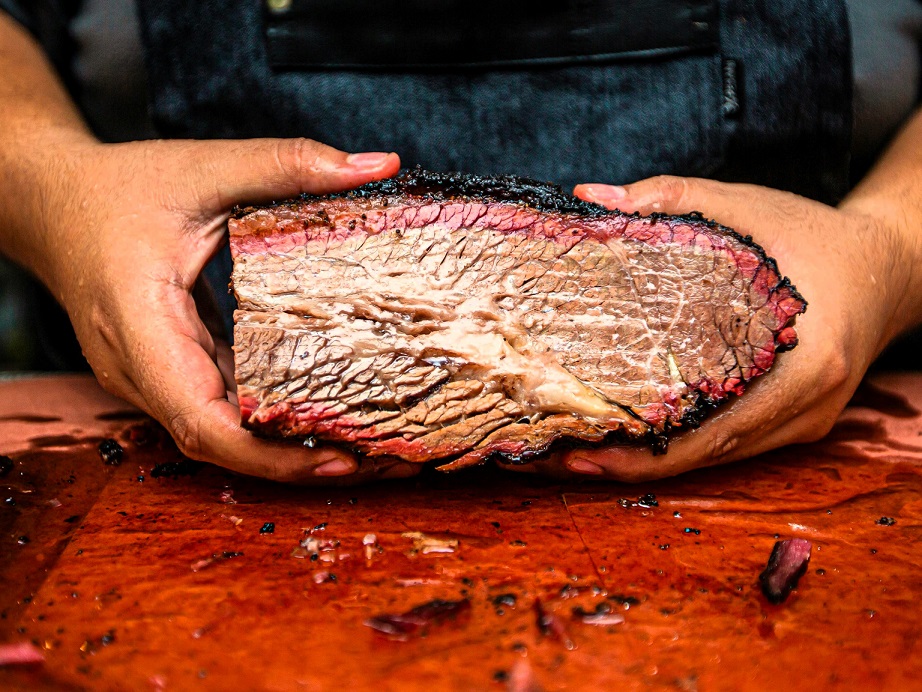
8. Brisket Sliders
For a fun and portable serving, try brisket sliders. Miniature buns with tender brisket and your favorite condiments (barbecue sauce, pickles, coleslaw) make for a perfect bite-sized meal. These are great for parties, picnics, or game day snacks.
9. Brisket Stew
Turn your brisket into a hearty brisket stew. Cube the meat and cook it with carrots, potatoes, onions, garlic, and beef broth for a rich, savory stew. Let it simmer for a couple of hours, and you’ll have a comforting dish that’s perfect for chilly evenings.
10. Brisket in a Wrap
For a quick and easy meal, use brisket in a wrap. Take large flour tortillas, and layer them with brisket, lettuce, tomato, and any other vegetables or condiments you like. Roll it up and enjoy a handheld, portable meal.
11. Brisket with Roasted Vegetables
Brisket also goes well with a side of roasted vegetables. Roasted carrots, onions, potatoes, or even Brussels sprouts are excellent accompaniments. The slightly crispy texture and caramelization of the vegetables pair perfectly with the smoky, tender brisket.
12. Brisket Pizza
For a fun twist on traditional pizza, try brisket pizza. Use leftover brisket as a topping, along with barbecue sauce, cheese, and any additional toppings you like (such as red onions or cilantro). Bake until the cheese is bubbly and golden, and you have a unique take on pizza.
Final Thoughts: What to Do Next Time?
If you’ve had trouble with dry brisket in the past, don’t worry—it’s a common mistake that many beginner cooks make. Just remember to keep the cooking process low and slow, monitor the internal temperature, and give the meat enough time to cook properly.
By following these tips, using a meat thermometer, and making sure you cook the brisket at lower temperatures, you can achieve the perfect brisket that will be the highlight of any meal. Whether you’re cooking a Texas-style brisket or trying out a new smoked brisket recipe, you’ll soon master the art of making great brisket!
Now, armed with these tips, you’re ready for your next brisket adventure. Good luck, and remember that practice makes perfect!

